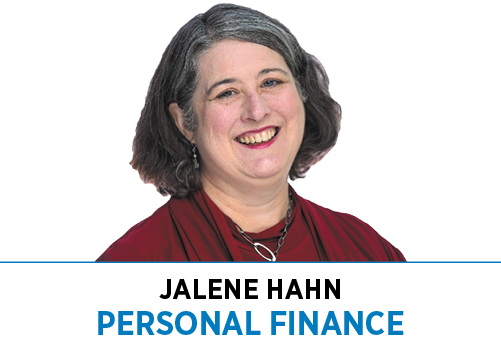Subscriber Benefit
As a subscriber you can listen to articles at work, in the car, or while you work out. Subscribe Now I participate in a small strategy group that has monthly conference calls. This month’s focus was managing income distributions during a prolonged market downturn. The accumulation phase of retirement planning is easy: Save as much as you can as early as you can and invest in a diversified, growth-oriented portfolio. The distribution phase is more complicated.
I participate in a small strategy group that has monthly conference calls. This month’s focus was managing income distributions during a prolonged market downturn. The accumulation phase of retirement planning is easy: Save as much as you can as early as you can and invest in a diversified, growth-oriented portfolio. The distribution phase is more complicated.
In 1994, Bill Bengen introduced the concept of the 4% rule. With certain stipulations, his research found that a 4% initial withdrawal rate adjusted annually for inflation would be sustainable in the worst-case scenario over a 30-year horizon. My group reviewed research focused on creating a spending strategy that allows individuals to optimize spending over an uncertain time frame without depleting a portfolio.
The 4% rule is generally the starting point for determining initial withdrawal rates, and several variations have developed over the years. Most common strategies make upward or downward spending adjustments based on market returns. The dilemma is that these strategies produce inconsistent income streams and might still result in suboptimal spending over a retiree’s lifetime.
Wade Pfau is a professor of retirement income at The American College and is the author of, “How Much Can I Spend in Retirement? A Guide to Investment-Based Retirement Income Strategies.” Pfau describes the two primary philosophies for retirement-income planning: the probability-based school of thought (investment focused) and the safety-first school of thought (insurance focused). My bias is toward the probability school of thought.
This perspective relies heavily on using variable spending strategies to meet goals. Pfau advocates using a framework to help clients think about “the important issues, such as spending flexibility, feelings about upside spending growth vs. downside spending risks and a minimum spending threshold to be protected, desired direction of spending (for instance, whether to decrease spending over time), the appropriate planning horizon, and any legacy goals.”
Pfau starts his analysis with taking the multitude of available individual goals and simplifying them into the “the four L’s of retirement”: longevity, lifestyle, legacy and liquidity. Longevity covers the sustainability of paying for core essential expenses in retirement. Lifestyle encompasses what I call “fun stuff”—travel, personal improvement, hobbies and entertainment. Legacy goals look at your desired financial impact on the community and your family. Liquidity can be thought of as a contingency fund—how you will use money not earmarked for other goals. Your distribution strategy and tools used will be different based on what areas you prioritize.
The other point Pfau made was to “approach retirement income tools with an agnostic view.” Understanding available tools and the appropriate use of those tools can help clients balance competing priorities. An annuity could be the right choice to cover basic income needs in retirement, portfolio spending for discretionary needs and insurance to cover legacy goals. My concern with this approach has been the high, hidden costs of annuities and other insurance-based products.
The Stanford Center on Longevity analyzed 292 retirement income strategies in 2017, and in 2019 published a detailed report, “Viability of the Spend Safely in Retirement Strategy.” The strategy includes two key steps: optimizing expected Social Security benefits through a careful delay strategy, ideally until age 70, and generating retirement income from savings using the IRS-required minimum distribution rules. This strategy is designed for middle-income workers and retirees (defined as having $1 million or less saved for retirement).
This discussion gave me many things to think about and helped clarify a framework for client conversations. I now have a better vocabulary and perspective on how to approach this topic with clients, both before and after they enter the distribution phase.•
__________
Hahn is a certified financial planner and owner of WWA Planning and Investments in Columbus. She can be reached at 812-379-1120 or [email protected].
Please enable JavaScript to view this content.
